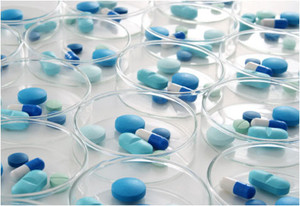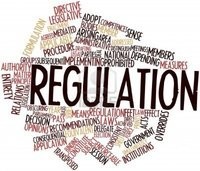On 10 June 2013, EMA released a revision of the guideline addressing the clinical and non-clinical issues related to similar biological products (biosimilars) containing biotechnology-derived proteins as the active substance. The draft guideline has been released for a six-month consultation period.
Revision of guideline on clinical and non-clinical issues for biosimilars
Home/Guidelines
|
Posted 14/06/2013
 2
Post your comment
2
Post your comment

The draft guideline outlines the non-clinical and clinical requirements for marketing authorization of a biosimilar claiming to be similar to a biological product already marketed. The non-clinical section addresses the pharmaco-toxicological assessment. The clinical section addresses the requirements for pharmacokinetic, pharmacodynamic, and efficacy studies. The section on clinical safety and pharmacovigilance addresses clinical safety studies as well as the risk management plan with special emphasis on studying the immunogenicity of the biosimilar. EMA states that it will also provide product-class specific guidelines to supplement this guideline where a need is identified.
The revised version of the guideline includes additional guidance in five main areas:
- the risk-based approach for the design of non-clinical studies
- the use of pharmacodynamic markers for the demonstration of clinical comparability
- study design (non-inferiority versus equivalence), choice of an appropriate patient population and choice of surrogate endpoints in efficacy trials
- the design of immunogenicity studies
- extrapolation of efficacy and safety from one therapeutic indication to another.
Factors influencing the extent of the (non-)clinical studies required to confirm biosimilarity are outlined by this guideline as being:
- the nature and complexity of the reference product
- the availability of suitable biomarkers.
The guidelines also identifies as important the need for applicants to fine tune their (non-)clinical studies according to the results of preceding physico-chemical and in vitro biological analyses of the biosimilar and the reference product. Highlighting EMA’s requirement of a step-wise approach for approval of biosimilars.
The proposed draft guideline will replace the ‘Guideline on similar biological medicinal products containing biotechnology-derived proteins as active substance: non-clinical and clinical issues’ (EMEA/CHMP/BMWP/42832/2005), which came into effect in 2006. EMA is seeking stakeholders’ views on the draft guideline, which is available on the EMA website. The agency has not, however, stated when it expects the new guideline to come into effect.
Guideline on similar biological medicinal products containing biotechnology-derived proteins as active substance: non-clinical and clinical issues
Date: 3 June 2013
http://www.ema.europa.eu/docs/en_GB/document_library/Scientific_guideline/2013/06/WC500144124.pdf
Feedback on the draft guideline can be submitted to:
BMWPSecretariat@ema.europa.eu until the end of November 2013. EMA did not state, however, when it expects the final guideline, which will replace EMEA/CHMP/BMWP/42832/2005, to be ready.
EMA is also revising the other two overarching biosimilars guidelines, both of which have also been released for public consultation:
Draft guideline on similar biological medicinal products
Date: 22 May 2013
End of consultation (deadline for comments): 31 October 2013
http://www.ema.europa.eu/docs/en_GB/document_library/Scientific_guideline/2013/05/WC500142978.pdf
Guideline on similar biological medicinal products containing biotechnology-derived proteins as active substance: quality issues (revision 1)
Date: 24 May 2012
End of consultation (deadline for comments): 31 November 2012
http://www.ema.europa.eu/docs/en_GB/document_library/Scientific_guideline/2012/05/WC500127960.pdf
Related articles
EMA issues draft revision of overarching biosimilar guidelines
Permission granted to reproduce for personal and non-commercial use only. All other reproduction, copy or reprinting of all or part of any ‘Content’ found on this website is strictly prohibited without the prior consent of the publisher. Contact the publisher to obtain permission before redistributing.
Copyright – Unless otherwise stated all contents of this website are © 2013 Pro Pharma Communications International. All Rights Reserved.
Source: EMA
Posted 05/08/2014 by Justyna K, GaBI Online Editorial Office
Response to 'Revised Biosim guidelines posted'
Dear Dr Appel, Thank you for your sharing your comments. We would be delighted if you would consider submitting a Commentary for <i>GaBI Journal</i> on this topic. If interested, please feel free to reach us at <a href="mailto:editorial@gabi-journal.net "> editorial@gabi-journal.net</a>. Thank you again and we hope to hear from you soon. Best regards, Justyna
Posted 18/06/2013 by Alan Appel, PhD
Revised Biosim guidelines
A cursory review of the information suggests that EMA has now followed the lead of US FDA towards developing a more measured approval pathway than when biosimilars were 1st developed and approved in the last decade.
This more cautious view is entirely justified when one considers the increased molecular complexity of the emerging generation of biosimilars as compared with those earlier and less complex agents.
In particular, the potential need for immunological characterization seems quite appropriate. Data provided during immunologic studies will provide an important subtext in the evaluation of a biosimilar's therapeutic activity.
Policies & Legislation
Argentina streamlines drug approval process
ANVISA tackles 24-month backlog in biologicals post-registration petitions
Most viewed articles
The best selling biotechnology drugs of 2008: the next biosimilars targets
Global biosimilars guideline development – EGA’s perspective
New guidance for biologicals in Pakistan and Hong Kong’s independent drug regulatory authority

Home/Guidelines Posted 20/10/2025
Canada poised to remove requirement for Phase III trials for biosimilars

Home/Guidelines Posted 22/07/2025
The best selling biotechnology drugs of 2008: the next biosimilars targets








Post your comment